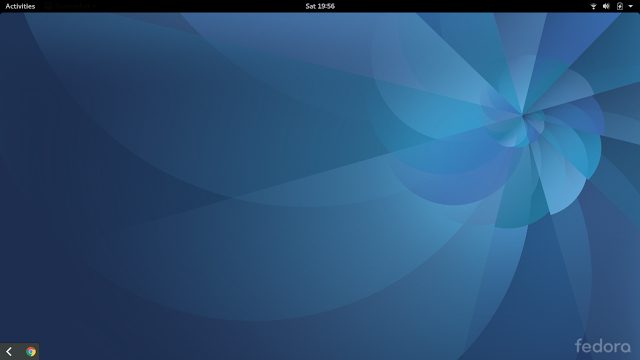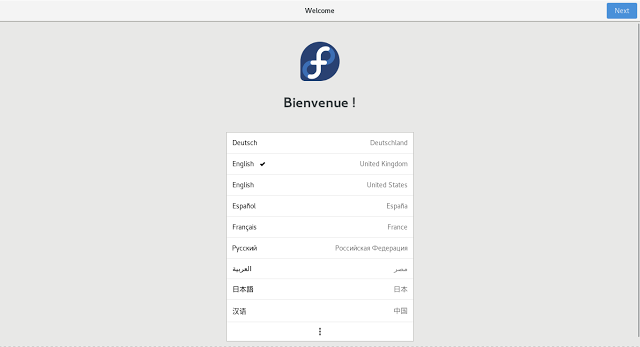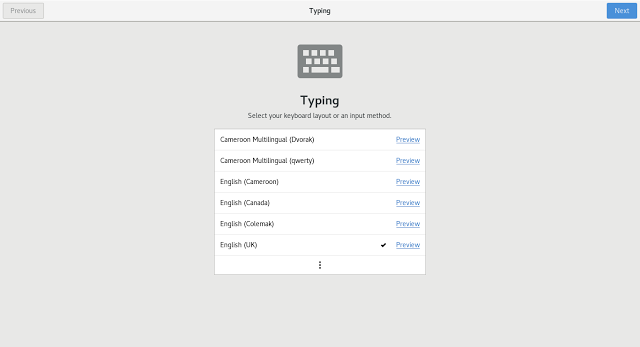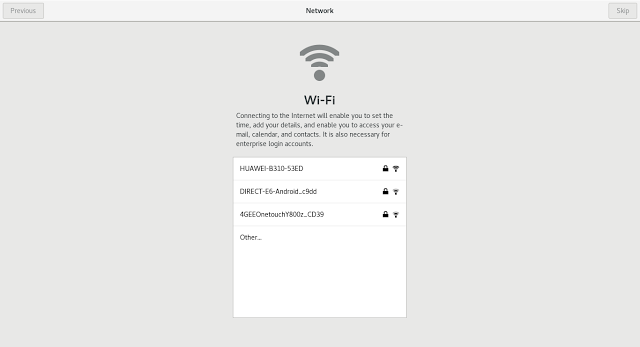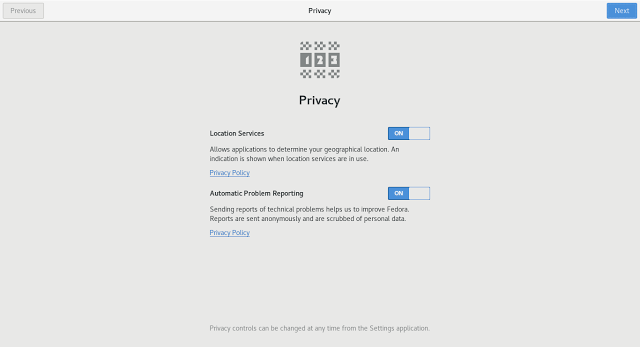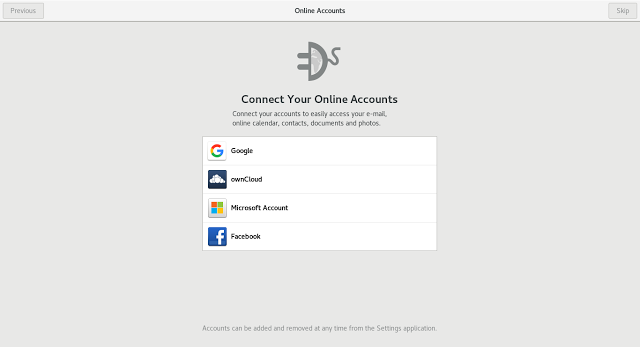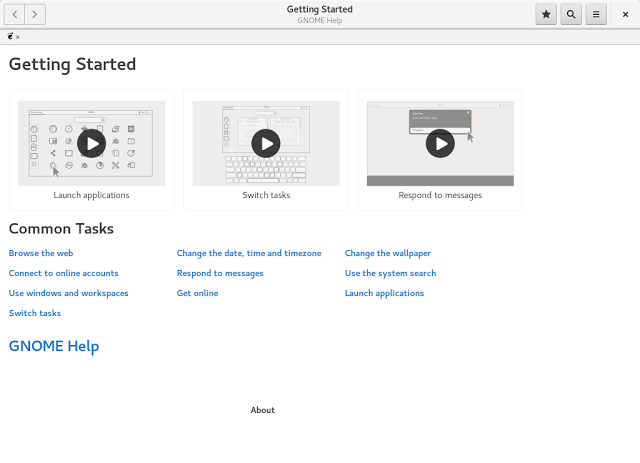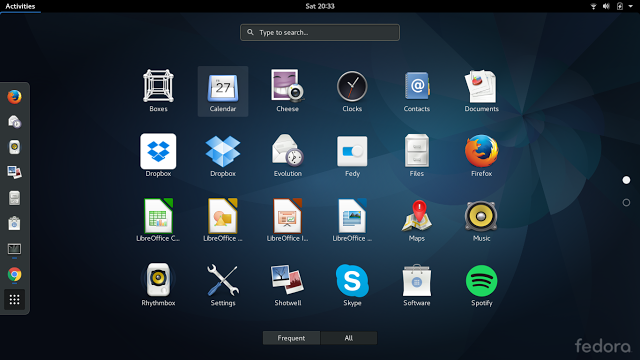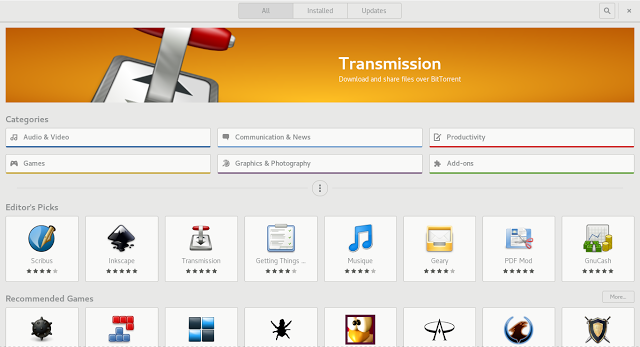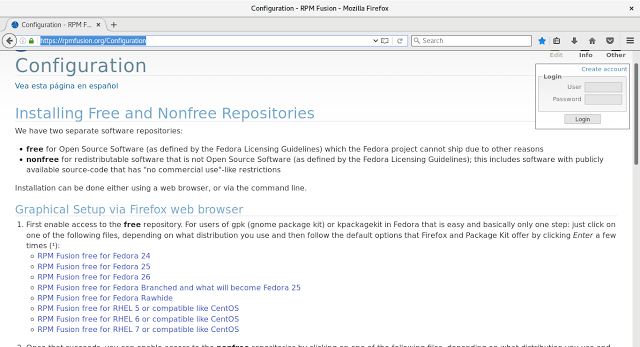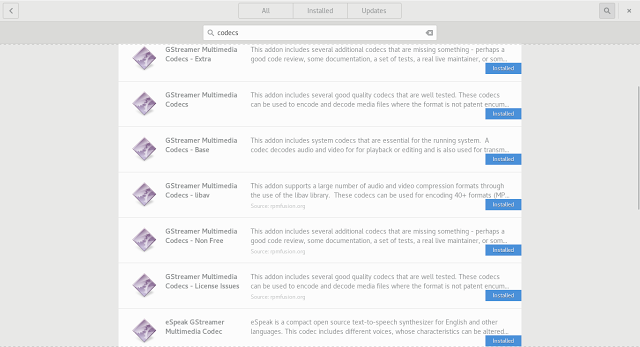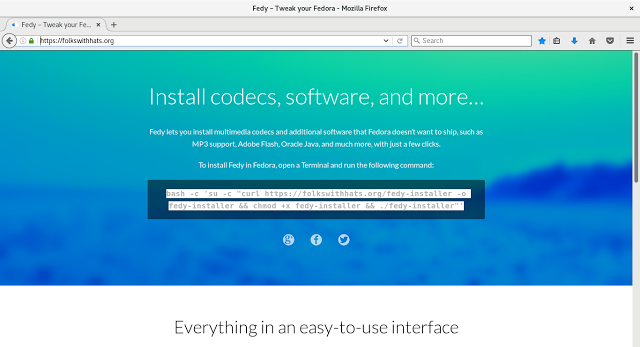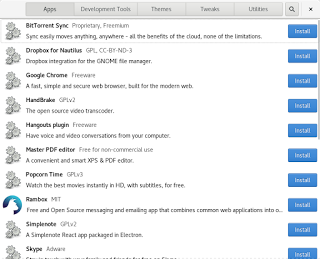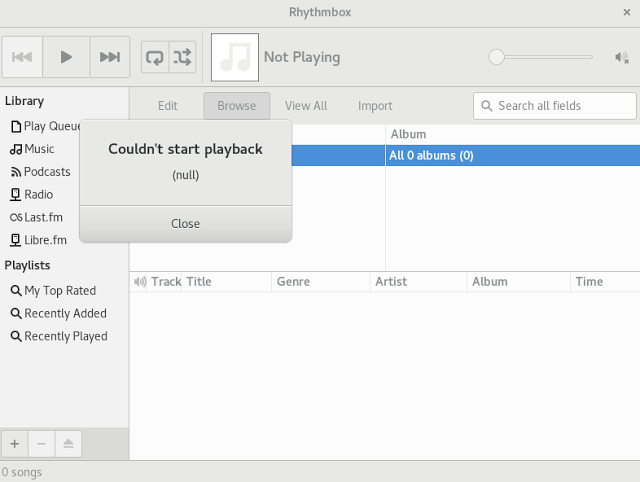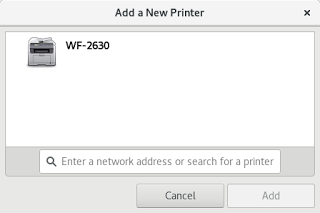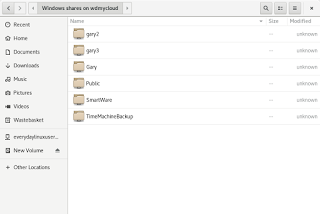Introduction
The last time I reviewed Fedora was in March, 2015 and I was in the main happy with it. Fast forward 2 years and I felt it was high time I had a look at the latest version.
Strap yourselves in guys because we are in for a bumpy ride.
How To Get Fedora 25
You can download the latest desktop version of Fedora (version 25) from https://getfedora.org/en/workstation/download/.
How To Create A Fedora USB Drive
There are a number of tools you can use to create a Fedora USB drive. I wrote about one method for a previous version of Fedora here.
I prefer nowadays to use a tool called Etcher which you can download from https://etcher.io/. This guide shows how to use it to create a Fedora USB drive. The good news is that Etcher works on Windows and Linux.
Installation
The Fedora installer hasn't changed since the last time I used it and this guide shows how to install Fedora. If you are interested in dual booting Fedora and Windows follow this guide.
Ok, so I am now going to do something I have never done before. I am going to rank the order of the installation experience of the top distributions.
- Ubuntu/Mint/Zorin - Easy peasy. A simple 6 step process and the partitioning works by itself whether you are dual booting or not
- Mageia - Another straight forward installation and the partitioning is self explanatory
- Fedora/CentOS - If you go for the default options then the installation process is a 2 step process. The partitioning isn't quite so straight forward however and I recommend creating a blank partition before starting the installation. Even if you want to use the entire drive you have to go through a process of reclaiming all the space. Compare this to Ubuntu where the options are use entire system, install alongside another operating system or something else then you can hopefully see this is a little less intuitive.
- Debian - Long winded but ultimately decent. There are more steps than your average person needs and the web site is a bit of a nightmare as there are so many versions
- openSUSE - Ouch. Great if you want to install as a standalone operating system but you are in big danger of losing a partition or two if you try and dual boot
I am going to expand this as an article in its own right and explain with images the issues. For now though lets just say that whilst I find Fedora easy enough to install others might find that it isn't quite as logical as it might be.
It is worth pointing out that whilst running the installer for Fedora 25 I experienced a severe lag on the first screen. The time between clicking "Continue" and the second screen showing was very long.
First Impressions
When you boot Fedora for the first time you are greeted with a welcome screen and from here you can make some initial settings.
The first screen lets you choose your language.
The first screen lets you choose your language.
The third screen lets you connect to the internet by choosing the appropriate wireless network. Simply choose the network and enter the security key.
The next again screen asks you whether you want location services turned on or off and whether you want error reports sent straight back to the developers.
Finally you can connect to online accounts. This integrates your online services with applications within the GNOME desktop. For instance your GMail or Windows mail will appear in the Evolution mail client.
Before you finally start using Fedora you are shown a page with links to documentation to help you get started with Fedora.
First Impressions
As pointed out in my review of openSUSE 42, when the chosen desktop is GNOME it is difficult to tell one distribution apart from another using the same desktop.
The real power lies in the added extras, how intuitive the distribution is, the applications that are included and how much pain you have to go through to get up and running.
GNOME is straight forward to use. There is a panel at the top. The "Activities" link opens up a screen with favourite icons and workspaces. Pressing the icon at the bottom of the launch bar shows a list of applications as shown above and you can easily search for what you are looking for using the search bar.
GNOME also includes system icons in the top right corner which make it possible to adjust audio settings, power settings and user settings.
This isn't a review of GNOME however. This is a review of Fedora 25.
The real power lies in the added extras, how intuitive the distribution is, the applications that are included and how much pain you have to go through to get up and running.
GNOME is straight forward to use. There is a panel at the top. The "Activities" link opens up a screen with favourite icons and workspaces. Pressing the icon at the bottom of the launch bar shows a list of applications as shown above and you can easily search for what you are looking for using the search bar.
GNOME also includes system icons in the top right corner which make it possible to adjust audio settings, power settings and user settings.
This isn't a review of GNOME however. This is a review of Fedora 25.
Installing Software
The GNOME software manager is the graphical tool used to install software and as with Ubuntu and openSUSE it doesn't show everything you require.
The reason I am starting with installing software is that Fedora ships with only free software which means you can't play MP3 audio or watch DVDs using your computer. In order to do so you need to install extra codecs.
The reason I am starting with installing software is that Fedora ships with only free software which means you can't play MP3 audio or watch DVDs using your computer. In order to do so you need to install extra codecs.
There are a set of repositories you can add to Fedora which make it possible to install the necessary non-free codecs and these are called RPM Fusion. (click here for the website)
On the linked page there is an option called "Enable repositories" which takes you to this page.
On the linked page there is an option called "Enable repositories" which takes you to this page.
You need to click on 2 links. The first installs the RPM Fusion Free for Fedora 25 and the second installs the RPM Fusion Non-Free repository for Fedora 25.
From within GNOME software you can now search for CODECs and install all of the GStreamer libraries.
In theory this should make it possible to play music, except for me it doesn't.
Whilst we are on the subject of installing software searching for the cool stuff such as Chrome, Steam and other gems results in no results at all.
I found a link to a repository and tool called Fedy which makes it easy to install all of this software although you can install Chrome from Google's own website.
In theory this should make it possible to play music, except for me it doesn't.
Whilst we are on the subject of installing software searching for the cool stuff such as Chrome, Steam and other gems results in no results at all.
I found a link to a repository and tool called Fedy which makes it easy to install all of this software although you can install Chrome from Google's own website.
Click here for the Fedy website.
To install the software you just need to open a terminal and paste in the lines of code highlighted in the image above.
To install the software you just need to open a terminal and paste in the lines of code highlighted in the image above.
Fedy has links to a large number of applications including Chrome, the Hangouts plugin, a PDF editor, Skype, Dropbox, Handbrake, Popcorn Time, Spotify and Steam.
Chrome Issue
I tried installing Chrome from the website and from Fedy but the icon never appears under the applications within GNOME.
I can run Chrome from the command line easily enough and there is clearly a desktop file in the correct folder and it appears to have all the correct values in it but it doesn't show up.
Software
Rhythmbox hung every time I used it, so I uninstalled it and re-installed it. Now it doesn't crash but I can't play any music because despite installing the codecs using the RPM fusion repositories, using Fedy and following this guide on Dedoimedo's site, as well as using Yum Extender to install the GStreamer bad and ugly libraries the system complains there aren't any libraries installed. The application offers to find the correct codecs and then promptly crashes.
Video playback is the same. It complains there are no codecs, offers to find them and then falls on its proverbial backside.
With these minor things (?!?) out of the way lets look at the rest of the software. Default applications include Firefox for web browsing, Evolution for email, Rhythmbox for audio, Totem for video playback, GNOME Boxes for virtualisation, a calendar, clock, webcam viewer, document viewer, LibreOffice office suite, GNOME Maps, GNOME weather and Shotwell for photo management.
With these minor things (?!?) out of the way lets look at the rest of the software. Default applications include Firefox for web browsing, Evolution for email, Rhythmbox for audio, Totem for video playback, GNOME Boxes for virtualisation, a calendar, clock, webcam viewer, document viewer, LibreOffice office suite, GNOME Maps, GNOME weather and Shotwell for photo management.
Hardware
On a positive note my printer was easy enough to set up. Simply click on settings, printers and then add printer.
On an even more positive note my WDMyCloud also worked without error.
Summary
So where does that leave us?
I have always loved Fedora but I love music more and the amount of hassle and the amount of hoops I have had to jump through to try and get it working this time is just not worth the effort. The Google Chrome thing is also an issue for me. It works fine in openSUSE so why is it not working in Fedora?
Wayland seems to be performing well enough and I haven't experienced any problems that seem to be related to the graphical side of things.
Unfortunately I have witnessed far too many errors, notifications, application crashes and general pointless pain to be able to recommend Fedora 25. Fedora 23 worked great, 25 doesn't.
I recommend either CentOS or openSUSE for now.

